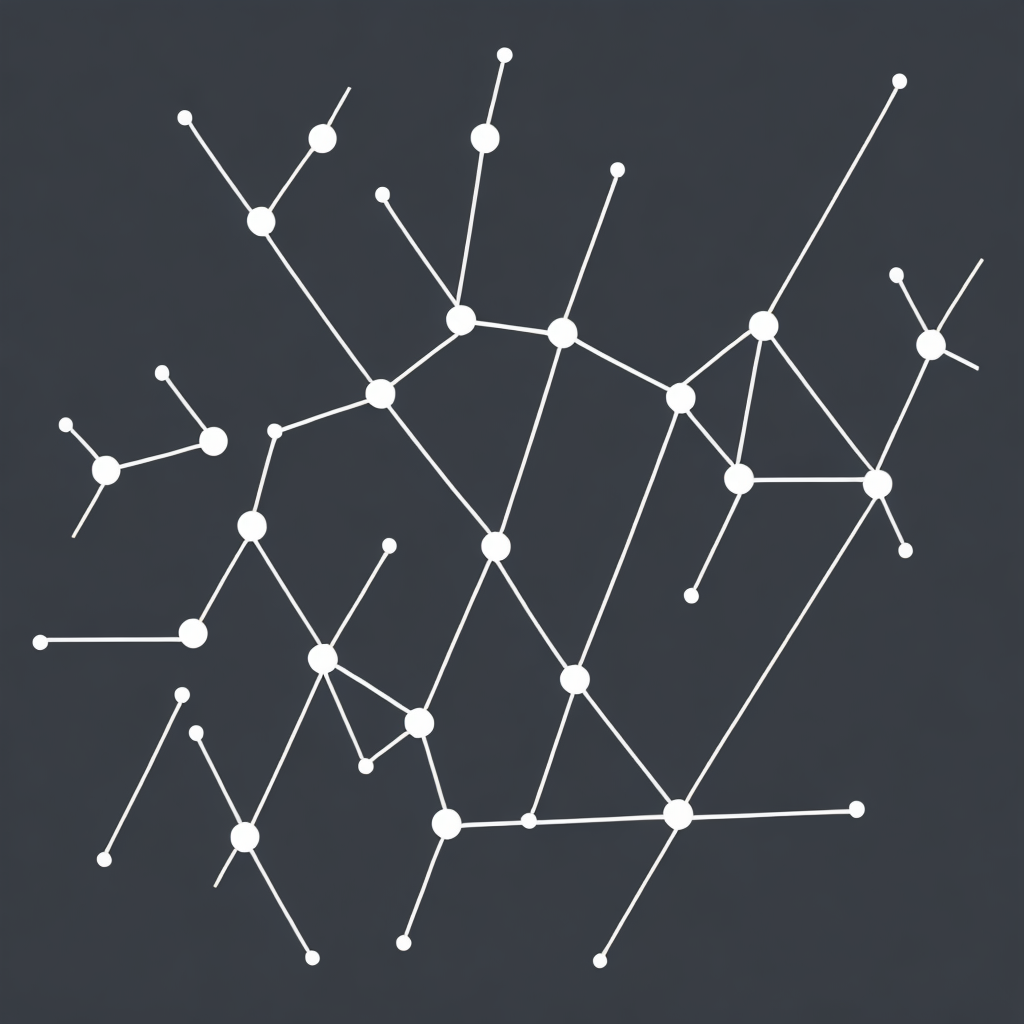Unlocking the Potential of Knowledge Graphs: A Comprehensive Guide to Harnessing Structured Information for Enhanced Data Intelligence
Introduction
Knowledge graphs represent a monumental shift in the way we manage and make use of structured data, allowing organizations to bring new meaning and context to their data assets. By providing a linked representation of entity relationships, they transform raw data into a structured, interconnected web of knowledge. This revolutionary approach to data organization offers several advantages, from improved data search and retrieval capabilities to enhanced insights generation and predictive analytics.
In this guide, we break down the fundamental concepts, key features, and application examples of knowledge graphs, along with best practices and considerations for organizations looking to leverage them effectively in their data intelligence ecosystem. Whether you are a seasoned data professional or a newcomer to the field, understanding the power of knowledge graphs is crucial for unlocking the full value of your data assets and driving innovative, data-driven solutions.
1. Understanding Knowledge Graphs Fundamentals
知识图谱 (Knowledge Graph) 是一种网络结构化的表示实体、对象及其之间关系的方式。在知识图谱中, 每个实体(如人、地点、物品等)都被表示为图中的节点 (Vertices), 而实体之间的关系则通过边 (Edges) 连接。通过这样的结构层次,知识图谱不仅记录了数据的逻辑连接,还支持各种查询、分析,以及深度的洞察的生成。
Knowledge graphs fundamentally represent entities and their relationships in a networked structure. Within a knowledge graph, each entity (such as individuals, locations, objects, etc.) is represented as nodes (Vertices), with edge connections linking these nodes to depict relationships. This structured framework not only captures logical connections between data points but also facilitates various query, analysis, and insight-generating activities.
2. Key Features and Benefits of Knowledge Graphs
知识图谱的主要特点和优势概括如下:
1. **Integrating Heterogeneous Data Sources** 知识图谱能有效整合多源异构数据,提供统一的数据视图。
2. **Enriching Data with Context** 提供上下文信息,增强数据的解释性和洞察力。
3. **Enhanced Search and Retrieval** 支持更具智能和丰富的数据查找和检索功能。
4. **Predictive Analysis** 基于实体关系的预测分析,为决策提供依据。
5. **Personalization and Recommender Systems** 提供个性化推荐系统,提高用户满意度。
6. **Semantic Search** 语义化的搜索功能,帮助用户更精确地找到所需信息。
7. **Scalability and Flexibility** 为大规模应用提供卓越的扩展性和灵活性。
The key features and benefits of knowledge graphs are as follows:
1. **Integration of Heterogeneous Data Sources** – Enables the effective aggregation of data from diverse sources into a unified view of data.
2. **Contextual Data Enrichment** – Provides context that enhances data interpretability and insight generation.
3. **Advanced Search and Retrieval** – Supports smarter and more sophisticated data search and retrieval mechanisms.
4. **Predictive Analytics** – Facilitates predictive analysis through the exploitation of entity relationships for informed decision-making.
5. **Personalization and Recommendation Systems** – Enables the creation of personalized recommendation systems, enhancing user satisfaction.
6. **Semantic Search** – Offers semantically-based search capabilities for more precise information discovery.
7. **Scalability and Flexibility** – Supports large-scale applications with outstanding scalability and adaptability.
3. Applications and Use Cases of Knowledge Graphs
知识图谱的应用范围广泛,涵盖多个行业和领域,以下列举几个典型领域以供参考:
1. **Healthcare** 在医疗保健领域,知识图谱利用实体链接和上下文丰富,为临床决策支持、药物发现和个性化医疗提供助力。
2. **Finance** 在金融行业,知识图谱帮助识别潜在的金融犯罪活动、评估信贷风险和优化投资策略。
3. **Retail and E-commerce** 对于零售和电子商务,利用知识图谱实现库存优化、个性化推荐、欺诈检测等功能。
4. **Customer Relationship Management** 在客户服务和管理领域,知识图谱通过客户画像和互动历史提供全面的客户视角,促进更好的关系管理。
5. **Social Media and Entertainment** 社交媒体与娱乐领域,知识图谱用于内容推荐、用户兴趣分析、社交网络分析等,增强用户体验。
Knowledge graphs are utilized across a broad spectrum of industries and fields, some notable examples include:
1. **Healthcare** – Utilizes knowledge graph capabilities for clinical decision support, drug discovery, and personalized healthcare solutions.
2. **Finance** – Enables detection of financial fraud, credit risk assessment, and optimized investment strategies.
3. **Retail and E-commerce** – Employs knowledge graphs for inventory optimization, personalized recommendations, and fraud detection.
4. **Customer Relationship Management** – Offers a comprehensive customer view through knowledge graphs for enhanced relationship management.
5. **Social Media and Entertainment** – Supports content recommendation, user interest analysis, and social network insights, enhancing user experience.
4. Best Practices for Implementing Knowledge Graphs
要最大化知识图谱的价值,采取一些最佳实践是至关重要的。以下是一些指导原则:
1. **数据质量优先** 确保数据的准确性、完整性与实时性,为构建高质量的知识图谱奠定基础。
2. **定义明确的实体和关系** 精确地标识和分类实体,清晰定义关系类型,为知识图谱构建提供清晰的框架。
3. **持续维护与更新** 知识图谱需随数据变化而动态更新,确保信息时效性与适用性。
4. **性能优化** 采用高效率的数据存储与查询优化策略,保障知识图谱的可用性与访问速度。
5. **整合安全与隐私** 遵守相关法规要求,设计适当的安全机制,保护敏感数据隐私。
To maximize the value of knowledge graphs and implement them effectively, adhering to best practices is crucial. Guiding principles include:
1. **Prioritize Data Quality** – Ensuring data accuracy, completeness, and timeliness forms the cornerstone of building a high-quality knowledge graph.
2. **Define Entities and Relationships Precisely** – Accurately identify and categorize entities, clearly defining relation types to establish a robust graph structure.
3. **Continual Maintenance and Updating** – Keep the knowledge graph dynamic and updated with new data to ensure information remains relevant and useful.
4. **Optimize Performance** – Implement efficient data storage and query optimization strategies to ensure access and usability of the knowledge graph.
5. **Integrate Security and Privacy** – Adhere to regulatory requirements, design appropriate security measures, and protect sensitive data privacy.
In conclusion, the full potential of knowledge graphs lies in their ability to manage and utilize structured data in a way that amplifies organization intelligence. By understanding the fundamentals, recognizing their key features and benefits, identifying practical applications, and following best practices, organizations can harness the power of knowledge graphs to unlock new layers of data insights, drive innovation, and enhance decision-making across a wide array of industries. The journey towards leveraging knowledge graphs starts with recognizing their transformative potential and building a strategic roadmap for their integration and optimization within your data ecosystem.
